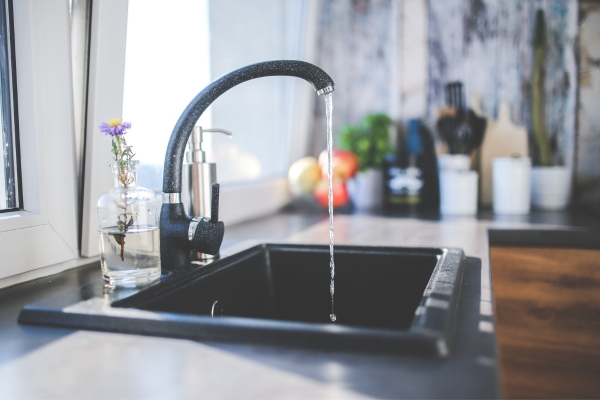Measure the size of a faucet may seem like a simple task, but it requires a bit of know-how to ensure you get the right fit for your sink and plumbing. Whether you’re replacing an old faucets, installing a new one, or simply checking for maintenance purposes, accurate measurements are crucial. This guide will walk you through the process of measuring faucet size step by step.
How do I measure the height of my faucet?
To measure the faucet’s height, place the measuring tape at the base where the faucets attaches to the sink and extend it to the highest point of the tube spout. Record this measurement to ensure adequate clearance for your needs.
Why Measuring Faucet Size Is Important?
Measuring faucet size is crucial for several reasons, ensuring compatibility and functionality in your kitchen or bathroom. Accurate measurements guarantee that the faucets will fit your sink and existing plumbing connections, preventing potential leaks and ensuring efficient water flow. Properly sized faucets also contribute to the aesthetics of the space, providing a neat and professional appearance. Moreover, correct measurements simplify the installation process, reducing the risk of errors and making the task smoother and quicker. Overall, precise faucets measurements are essential for maintaining a functional, efficient, and visually appealing sink area.
Tools You’ll Need
To measure your faucets size accurately, gather the following tools:
- Measuring tape or ruler
- Adjustable wrench
- Pen and paper for notes
- Pipe thread gauge (optional)
Steps to Measure Faucet Size
1. Measure the Faucet’s Height

The first step in measuring your tube size is determining its height. This measurement is taken from the base where the faucets attach to the sink to the highest point of the faucet spout. The height is crucial, especially for kitchen faucets, as it ensures there is enough clearance for tall pots and other large items. To measure the height, place a measuring tape at the base of the faucet and extend it to the top of the spout. Record this measurement to ensure you choose a faucets with adequate clearance for your needs.
2. Measure the Spout Reach

Next, measure the spout reach, which is the distance from the center of the faucet base to the center of the spout’s outlet. This measurement is vital to ensure the faucets can effectively reach all areas of your sink. To measure the spout reach, locate the center of the faucet base and measure the distance to the center of the spout’s outlet. Accurate spout reach measurement helps in selecting a faucets that provides optimal functionality and ease of use.
3. Measure the Faucet’s Mounting Hole Size

The size of the mounting hole is another critical measurement when determining the correct tube size. The mounting hole size must match the tube base to ensure a secure fit. To measure this, remove the tube if necessary and use a measuring tape or ruler to measure the diameter of the mounting hole. Record this measurement to confirm compatibility with your sink’s pre-drilled holes.
4. Measure the Distance Between Mounting Holes

For sinks with multiple mounting holes, it is essential to measure the distance between the centers of these holes. This measurement ensures that the new faucet will fit properly without requiring additional modifications. To measure the distance between mounting holes, start from the center of one hole and measure to the center of the next. This step is particularly important for center-set and widespread faucets, which rely on precise hole spacing for correct installation.
5. Determine the Thread Size of the Faucets

Finally, determining the thread size of the tube is necessary, especially if you are replacing an existing tube and need to connect supply lines. To do this, remove the faucet and use a pipe thread gauge to measure the thread size. If a thread gauge is not available, consult the faucet’s manual or manufacturer’s website for this information. Knowing the thread size helps in ensuring that the supply lines and other plumbing connections are compatible with the new tube.
Additional Tips for Accurate Measurement
- Double-Check Your Measurements: Always measure twice to ensure accuracy.
- Consider the Surrounding Space: Ensure there’s enough space around the faucet for handles to operate freely.
- Consult Manufacturer Specifications: Refer to the faucet’s manual or manufacturer’s website for specific measurement guidelines.
Common Faucets Sizes and Configurations
Understanding common tube sizes and configurations can help you make informed decisions:
- Single-Hole Faucets: Typically require one mounting hole and are common in modern designs.
- Center-Set Faucets: Fit sinks with three holes, with handles and spout integrated on a single base.
- Widespread Faucets: Also fit sinks with three holes but have separate handles and spout, allowing for more flexible installation.
- Wall-Mounted Faucets: Require specific wall plumbing and are measured differently, focusing on spout reach and height.
Conclusion
Measuring your faucet size accurately is essential for a successful installation or replacement. By following the steps outlined in this guide, you can ensure that Replace your faucets fit perfectly, operate efficiently, and enhance the overall look of your sink area. Remember to take your time, double-check your measurements, and consult manufacturer specifications when in doubt. With the right measurements, you can enjoy a hassle-free faucets installation and reliable performance for years to come.


